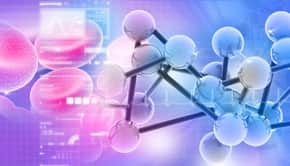LS1 From Molecules to Organisms Lesson Plans

From molecules to organisms lesson plans designed for high school, middle school, and elementary school science teachers are downloadable here. The driving questions for from molecules to organisms are "How do organisms live and grow?" Click on the ngss units below to see a list of free lessons by standard.
-
High School LS1 Lesson Plans
HS-LS1.A: Structure and Function
- HS-LS1-1 Lesson Plans: Construct an explanation based on evidence for how the structure of DNA determines the structure of proteins which carry out the essential functions of life through systems of specialized cells.
- HS-LS1-2 Lesson Plans: Develop and use a model to illustrate the hierarchical organization of interacting systems that provide specific functions within multicellular organisms.
- HS-LS1-3 Lesson Plans: Plan and conduct an investigation to provide evidence that feedback mechanisms maintain homeostasis.
HS-LS1.B: Growth and Development of Organisms
- HS-LS1-4 Lesson Plans: Use a model to illustrate the role of cellular division (mitosis) and differentiation in producing and maintaining complex organisms.
HS-LS1.C: Organization for Matter and Energy Flow in Organisms
- HS-LS1-5 Lesson Plans: Use a model to illustrate how photosynthesis transforms light energy into stored chemical energy.
- HS-LS1-6 Lesson Plans: Construct and revise an explanation based on evidence for how carbon, hydrogen, and oxygen from sugar molecules may combine with other elements to form amino acids and/or other large carbon-based molecules.
- HS-LS1-7 Lesson Plans: Use a model to illustrate that cellular respiration is a chemical process whereby the bonds of food molecules and oxygen molecules are broken and the bonds in new compounds are formed resulting in a net transfer of energy.
-
Middle School LS1 Lesson Plans
MS-LS1.A: Structure and Function
- MS-LS1-1 Lesson Plans: Conduct an investigation to provide evidence that living things are made of cells; either one cell or many different numbers and types of cells.
- MS-LS1-2 Lesson Plans: Develop and use a model to describe the function of a cell as a whole and ways parts of cells contribute to the function.
- MS-LS1-3 Lesson Plans: Use argument supported by evidence for how the body is a system of interacting subsystems composed of groups of cells.
MS-LS1.B: Growth and Development of Organisms
- MS-LS1-4 Lesson Plans: Use argument based on empirical evidence and scientific reasoning to support an explanation for how characteristic animal behaviors and specialized plant structures affect the probability of successful reproduction of animals and plants respectively.
- MS-LS1-5 Lesson Plans: Construct a scientific explanation based on evidence for how environmental and genetic factors influence the growth of organisms.
MS-LS1.C: Organization for Matter and Energy Flow in Organisms
- MS-LS1-6 Lesson Plans: Construct a scientific explanation based on evidence for the role of photosynthesis in the cycling of matter and flow of energy into and out of organisms.
- MS-LS1-7 Lesson Plans: Develop a model to describe how food is rearranged through chemical reactions forming new molecules that support growth and/or release energy as this matter moves through an organism.
MS-LS1.D: Information Processing
- MS-LS1-8 Lesson Plans: Gather and synthesize information that sensory receptors respond to stimuli by sending messages to the brain for immediate behavior or storage as memories.
-
Elementary LS1 Lesson Plans
- 3-LS1-1 Lesson Plans: Develop models to describe that organisms have unique and diverse life cycles but all have in common birth, growth, reproduction, and death.
- 4-LS1-1 Lesson Plans: Construct an argument that plants and animals have internal and external structures that function to support survival, growth, behavior, and reproduction.
- 5-LS1-1 Lesson Plans: Support an argument that plants get the materials they need for growth chiefly from air and water.
 Lesson Plans
Lesson Plans